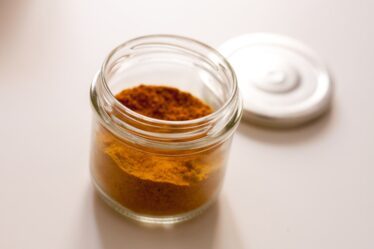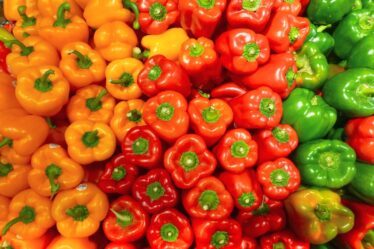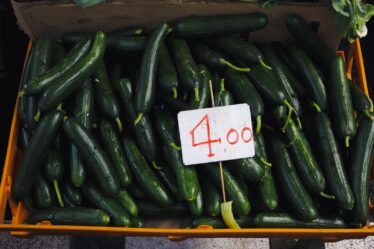
Chimichurri sauce is a vibrant and flavorful condiment that originated in South America, particularly in Argentina and Uruguay. It is a popular accompaniment to grilled meats, but its versatility allows it to be used in a variety of dishes. The sauce is made with a combination of fresh herbs, garlic, vinegar, and oil, resulting in a tangy and herbaceous flavor profile.
Chimichurri sauce has gained popularity not only in South American cuisine but also worldwide. Its bright green color and bold flavors make it an appealing addition to any dish. Whether used as a marinade, dressing, or simply as a dipping sauce, chimichurri adds a burst of freshness and complexity to any meal.
Key Takeaways
- Chimichurri sauce is a popular condiment in South American cuisine.
- The sauce originated in Argentina and Uruguay in the 19th century.
- The main ingredients in chimichurri sauce are parsley, garlic, vinegar, and oil.
- Chimichurri sauce is a healthy option as it is low in calories and high in antioxidants.
- Chimichurri sauce can be used as a marinade, dressing, or condiment and pairs well with grilled meats and vegetables.
The Origin and History of Chimichurri
The exact origin of chimichurri sauce is still debated among culinary historians. There are several theories regarding its creation, but most agree that it originated in Argentina or Uruguay. One theory suggests that the name “chimichurri” comes from the Basque word “tximitxurri,” which means “a mixture of several things in no particular order.” This theory suggests that Basque immigrants brought the sauce to South America and adapted it with local ingredients.
Another theory suggests that chimichurri sauce was created by British settlers in Argentina who were attempting to recreate the flavors of their homeland. They combined local ingredients such as garlic, parsley, and vinegar with spices from their native country to create the sauce.
Regardless of its exact origin, chimichurri sauce has been a staple in South American cuisine for centuries. It has evolved over time, with different regions and families adding their own twists to the recipe. Today, it is enjoyed not only in Argentina and Uruguay but also in other parts of South America and around the world.
Ingredients Used in Chimichurri Sauce
Chimichurri sauce is made with a handful of simple ingredients, each playing a crucial role in the overall flavor and texture of the sauce. The traditional ingredients used in chimichurri sauce include:
1. Fresh herbs: The base of chimichurri sauce is typically made with fresh parsley and oregano. These herbs provide a vibrant and herbaceous flavor to the sauce.
2. Garlic: Garlic is a key ingredient in chimichurri sauce, adding a pungent and savory element to the sauce.
3. Vinegar: Vinegar, usually red wine vinegar, provides acidity and tanginess to balance out the flavors of the herbs and garlic.
4. Oil: Olive oil is commonly used in chimichurri sauce to provide richness and help bind the ingredients together.
5. Red pepper flakes: Red pepper flakes add a subtle heat to the sauce, enhancing its overall flavor profile.
Each ingredient in chimichurri sauce contributes to its unique taste and texture. The combination of fresh herbs, garlic, vinegar, and oil creates a harmonious balance of flavors that is both refreshing and satisfying.
Health Benefits of Chimichurri Sauce
| Health Benefit | Description |
|---|---|
| Antioxidants | Chimichurri sauce contains herbs and spices that are rich in antioxidants, which help protect the body from damage caused by free radicals. |
| Anti-inflammatory | The herbs and spices in chimichurri sauce have anti-inflammatory properties, which can help reduce inflammation in the body and lower the risk of chronic diseases. |
| Heart Health | Chimichurri sauce is low in saturated fat and high in unsaturated fats, which can help improve cholesterol levels and reduce the risk of heart disease. |
| Vitamin C | Chimichurri sauce is a good source of vitamin C, which is important for immune function, skin health, and wound healing. |
| Iron | Chimichurri sauce contains iron, which is important for the production of red blood cells and the prevention of anemia. |
Chimichurri sauce not only adds flavor to your meals but also offers several health benefits. The ingredients used in chimichurri sauce are packed with nutrients and antioxidants that can support overall health. Here are some of the health benefits of chimichurri sauce:
1. Fresh herbs: Parsley and oregano, the main herbs used in chimichurri sauce, are rich in vitamins A, C, and K. They also contain antioxidants that can help reduce inflammation and support immune function.
2. Garlic: Garlic has been used for centuries for its medicinal properties. It contains compounds that have been shown to have antibacterial, antiviral, and antifungal properties. Garlic may also help lower blood pressure and cholesterol levels.
3. Vinegar: The vinegar used in chimichurri sauce, particularly red wine vinegar, contains acetic acid, which has been shown to help regulate blood sugar levels and improve digestion.
4. Olive oil: Olive oil is a heart-healthy fat that is rich in monounsaturated fats and antioxidants. It has been associated with a reduced risk of heart disease and may help improve cholesterol levels.
5. Red pepper flakes: Red pepper flakes contain capsaicin, a compound that has been shown to have anti-inflammatory and pain-relieving properties. Capsaicin may also help boost metabolism and aid in weight loss.
By incorporating chimichurri sauce into your meals, you can enjoy its delicious flavors while reaping the health benefits of its nutritious ingredients.
How to Make Chimichurri Sauce at Home
Making chimichurri sauce at home is quick and easy. Here is a step-by-step guide on how to make the perfect chimichurri sauce:
1. Gather your ingredients: You will need fresh parsley, fresh oregano, garlic cloves, red wine vinegar, olive oil, red pepper flakes, salt, and pepper.
2. Finely chop the herbs: Remove the leaves from the parsley and oregano stems and finely chop them. You can use a knife or a food processor for this step.
3. Mince the garlic: Peel the garlic cloves and mince them finely.
4. Combine the ingredients: In a bowl, combine the chopped herbs, minced garlic, red wine vinegar, olive oil, red pepper flakes, salt, and pepper. Mix well to combine.
5. Let it sit: Allow the chimichurri sauce to sit for at least 30 minutes before using to allow the flavors to meld together.
Tips and tricks for the perfect chimichurri sauce:
– Use fresh herbs for the best flavor. If you can’t find fresh oregano, you can substitute dried oregano, but use half the amount called for in the recipe.
– Adjust the amount of red pepper flakes to suit your spice preference. If you prefer a milder sauce, use less; if you like it spicy, add more.
– Use a high-quality olive oil for the best results. Extra virgin olive oil will provide the most flavor.
– Store any leftover chimichurri sauce in an airtight container in the refrigerator for up to a week.
Pairing Chimichurri Sauce with Different Foods

Chimichurri sauce is incredibly versatile and pairs well with a wide range of foods. Here are some suggestions for foods that complement chimichurri sauce:
1. Grilled meats: Chimichurri sauce is traditionally served with grilled meats such as steak, chicken, and pork. The tangy and herbaceous flavors of the sauce complement the smoky flavors of grilled meats perfectly.
2. Seafood: Chimichurri sauce also pairs well with seafood, particularly grilled or roasted fish. The freshness of the herbs and the acidity of the vinegar help cut through the richness of the fish.
3. Vegetables: Chimichurri sauce can be drizzled over roasted or grilled vegetables to add a burst of flavor. It works particularly well with vegetables such as bell peppers, zucchini, and eggplant.
4. Sandwiches and burgers: Use chimichurri sauce as a spread on sandwiches and burgers for an extra layer of flavor. It adds a refreshing and tangy element to any sandwich.
5. Salads: Chimichurri sauce can be used as a dressing for salads, particularly those with grilled vegetables or meats. Its bold flavors can elevate a simple salad into a delicious and satisfying meal.
The possibilities are endless when it comes to pairing chimichurri sauce with different foods. Get creative and experiment with different combinations to find your favorite.
Chimichurri Sauce Variations and Modifications
While the traditional chimichurri sauce recipe is delicious on its own, there are also many variations and modifications that you can try to suit your taste preferences or dietary needs. Here are a few examples:
1. Cilantro chimichurri: Replace the parsley with cilantro for a slightly different flavor profile. This variation pairs well with Mexican or Tex-Mex dishes.
2. Mint chimichurri: Add fresh mint leaves to the traditional chimichurri sauce for a refreshing twist. This variation works well with lamb or grilled vegetables.
3. Avocado chimichurri: Blend ripe avocado with the traditional chimichurri sauce ingredients for a creamy and flavorful variation. This version is great as a dip or spread.
4. Vegan chimichurri: Replace the traditional red wine vinegar with apple cider vinegar and use a vegan-friendly oil such as avocado oil instead of olive oil. This modification is suitable for those following a vegan or plant-based diet.
Feel free to experiment with different herbs, spices, and ingredients to create your own unique version of chimichurri sauce.
Chimichurri Sauce in Different Cuisines
Chimichurri sauce has made its way into various cuisines around the world, adapting to suit different palates and flavor profiles. Here are some examples of how chimichurri sauce is used in different cuisines:
1. Brazilian cuisine: In Brazil, chimichurri sauce is often served with churrasco, a style of barbecue that features various cuts of meat cooked on skewers. The sauce adds a burst of flavor to the smoky and juicy meats.
2. Mexican cuisine: In Mexico, chimichurri sauce is sometimes used as a marinade for grilled meats or as a topping for tacos and quesadillas. The addition of lime juice and cilantro gives it a Mexican twist.
3. Mediterranean cuisine: In Mediterranean cuisine, chimichurri sauce is often used as a dressing for salads or as a sauce for grilled vegetables and seafood. The flavors of the sauce complement the fresh and vibrant ingredients commonly found in Mediterranean dishes.
4. Asian cuisine: In Asian cuisine, chimichurri sauce is sometimes used as a dipping sauce for dumplings or spring rolls. The tangy and herbaceous flavors of the sauce provide a refreshing contrast to the savory fillings.
Chimichurri sauce’s adaptability allows it to be incorporated into various cuisines, adding a unique twist to traditional dishes.
Chimichurri Sauce as a Marinade or Dressing
Chimichurri sauce can be used as both a marinade and a dressing, adding flavor and complexity to your meals. Here’s how you can use chimichurri sauce in these different ways:
1. Marinade: Coat your choice of meat, such as steak or chicken, with chimichurri sauce and let it marinate for at least 30 minutes, or overnight for maximum flavor. The acidity of the vinegar helps tenderize the meat while the herbs and garlic infuse it with delicious flavors. Grill or roast the marinated meat for a flavorful and juicy result.
2. Dressing: Use chimichurri sauce as a dressing for salads by drizzling it over mixed greens or roasted vegetables. The tangy and herbaceous flavors of the sauce add brightness to any salad. You can also use it as a dressing for grain bowls or pasta salads for an extra burst of flavor.
Whether used as a marinade or dressing, chimichurri sauce adds depth and complexity to your dishes, taking them to the next level.
Conclusion and Final Thoughts on Chimichurri Sauce
Chimichurri sauce is a versatile and flavorful condiment that has gained popularity worldwide. Its origins may be debated, but its deliciousness is undeniable. Made with fresh herbs, garlic, vinegar, and oil, chimichurri sauce adds a tangy and herbaceous flavor to a variety of dishes.
Not only does chimichurri sauce enhance the taste of your meals, but it also offers several health benefits. The ingredients used in chimichurri sauce are packed with nutrients and antioxidants that can support overall health.
Whether you’re grilling meats, roasting vegetables, or dressing a salad, chimichurri sauce is the perfect accompaniment. Its vibrant flavors and versatility make it a must-have in any kitchen. So why not give it a try and experience the deliciousness of chimichurri sauce for yourself?
If you’re a fan of chimichurri spices, you’ll love exploring the world of culinary delights. One such delight is the versatility of boysenberries. These juicy berries are not only delicious on their own but can also be used in a variety of dishes, from sweet desserts to savory sauces. To learn more about the culinary potential of boysenberries, check out this article on Flavorful Sips: The Versatility of Boysenberries: A Culinary Delight.



